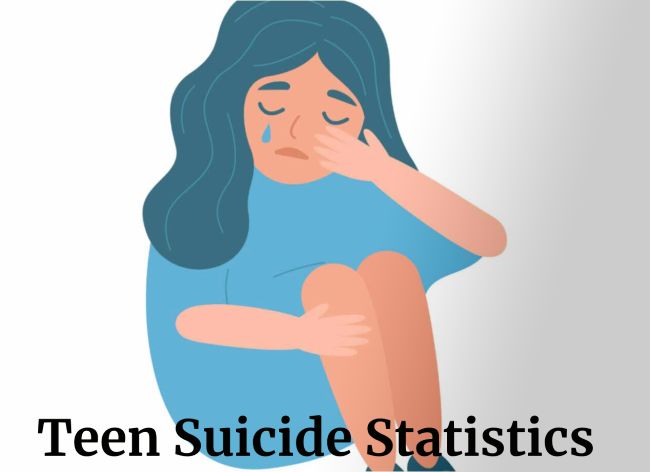Teen suicide statistics are unfortunately common. Teenagers continue to believe that suicide is their only option year after year. Teenagers, parents, friends, and family members can find many resources to help them deal with possible suicidal ideation.
This serious issue can be better understood by understanding teen suicide statistics and preventing future tragedies.
Teen Suicide Statistics
While it may be challenging to examine the numbers in this context, it can help highlight the magnitude of the problem of teen suicide, even though it may be difficult to do so.
Suicide Attempts
According to the American Foundation for Suicide Prevention, there are 130 suicides committed every day in the United States, which makes suicide the 10th largest killer of Americans according to the Foundation. It is estimated that over 7 percent of teenagers between the ages of 15 and 18 have attempted suicide at some point in the last year.
The suicide rate remains a significant issue in all populations, but it is among the leading causes of death among adolescents (those between the ages of 15 and 24) with 14.46 suicides being reported for every 100,000 people each year in this age group.
Suicide and Mental Health
It is estimated that suicide ranks third on the list of the leading causes of death among teenagers, according to Teen Help. Approximately 90 percent of those who commit suicide or attempt to commit suicide suffer from depression, bipolar disorder, and a possible comorbid diagnosis when committing or attempting suicide.
It is estimated that more than half of teens who use drugs or alcohol also have another mental health diagnosis, which puts them at an even higher risk of developing suicidal ideation and making attempts to commit suicide.
It is also important to recognize that teens who have attachment problems, have experienced a single traumatic event or multiple traumatic events, and have little support can also be at risk for suicidal thoughts.

Gender Specific Data
There are four times as many males who succeed in taking their own lives as compared to their female peers, according to Teen Help; however, females are three times more likely to attempt suicide as compared to males.
Due to the fact that men have a higher likelihood of using firearms or other deadly weapons compared to women, who tend to self-poison more often than not.
Bullying and Abusive Relationships
An investigation was conducted that examined how bullying and abusive relationships impacted the suicide rate among around 11,000 high school students between the ages of 16 and 18. It was found that female victims of bullying at school had higher rates of suicidality compared to their male counterparts, but male victims of sexual violence had higher rates of suicide compared to female victims.
It has been found that physical dating violence is the strongest predictor of suicide attempts. Suicide rates are higher in those who have been bullied between two and nine times than those who have not been bullied.
Warning Signs
In the Teen Suicide Statistics, it is explained that there are many factors that can indicate that a teen may be contemplating suicide. Such factors include talking about death frequently, writing depressed poetry, abrupt changes in behavior, acting recklessly, changing their diet, isolating themselves, or using drugs and alcohol as a means of self-treatment.
As well as giving away their items and appearing to be on an emotional upswing right before committing suicide, they may also give away their items to others. As soon as possible, teens should speak to an adult if they observe these behaviors in one of their friends or family members.
Planning and Committing Suicide
The Centers for Disease Control and Prevention (CDC) reports that 17 percent of teenagers have considered suicide as an option in their own lives, and 13.6% of teenagers have actually devised a strategy or plan for committing suicide in one way or another.
It has been reported that eight percent of students have attempted suicide at least once in their lifetime, and that 2.7 percent of those students need medical attention afterward as a result of serious injuries they have sustained.
Look for Help
As shocking as it can be to see the amount of statistics that are available on teen suicides, it can also be difficult to understand them. In the event that you or a friend are thinking about suicide, it would be wise to seek help as soon as possible. For people who are suffering from uncomfortable symptoms and pervasive thoughts and who are looking for support, there are incredible resources available to them.
Call the police immediately if you are in need of emergency assistance, or contact a suicide hotline that is available 24/7. There is no need to feel alone and you deserve the highest level of care that is available to you.
